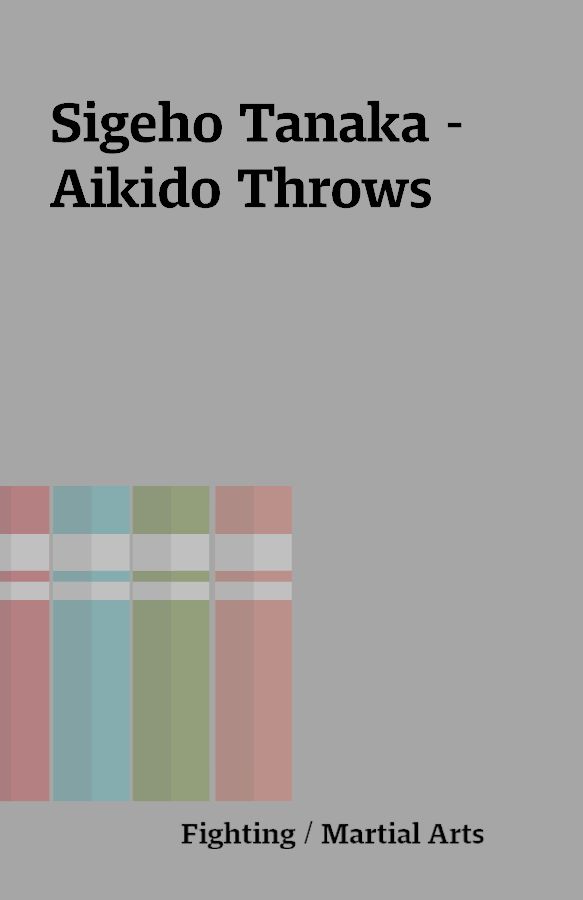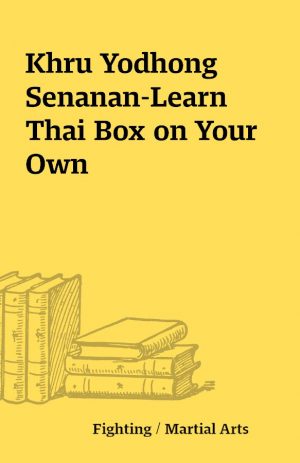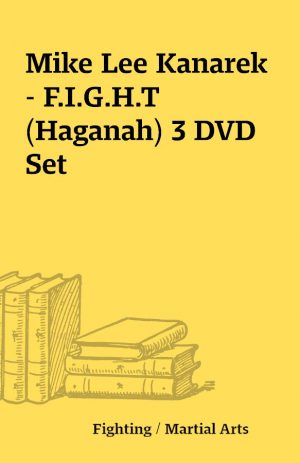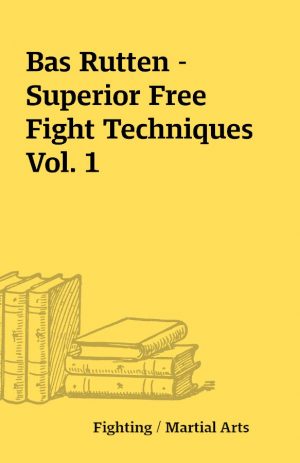Sigeho Tanaka – Aikido Throws
Sensei Sigeho Tanaka.mpg
[VHS transfer (avi)]
Description
AIKIDOAikido (合気道, aikidō?) is a Japanese martial art developed by Morihei Ueshiba as a synthesis of his martial studies, philosophy, and religious beliefs. Aikido is often translated as “the Way of unifying (with) life energy” or as “the Way of harmonious spirit.” Ueshiba’s goal was to create an art that practitioners could use to defend themselves while also protecting their attacker from injury.Aikido is performed by blending with the motion of the attacker and redirecting the force of the attack rather than opposing it head-on. This requires very little physical strength, as the aikidōka (aikido practitioner) “leads” the attacker’s momentum using entering and turning movements. The techniques are completed with various throws or joint locks. Aikido can be categorized under the general umbrella of grappling arts.Aikido derives mainly from the martial art of Daitō-ryū Aiki-jūjutsu, but began to diverge from it in the late 1920s, partly due to Ueshiba’s involvement with the Ōmoto-kyō religion. Ueshiba’s early students’ documents bear the term aiki-jūjutsu.[4] Many of Ueshiba’s senior students have different approaches to aikido, depending on when they studied with him. Today aikido is found all over the world in a number of styles, with broad ranges of interpretation and emphasis. However, they all share techniques learned from Ueshiba and most have concern for the well-being of the attacker.The word “aikido” is formed of three kanji:合 – ai – love, joining, unifying, combining, fit気 – ki – spirit, energy, mood, morale道 – dō – way, pathThe term ‘aiki’ does not readily appear in the Japanese language outside the scope of Budo. This has led to many possible interpretations of the word. 合 is mainly used in compounds to mean ‘combine, unite, join together, meet’ examples being 合同(combined/united) 合成(composition) 結合(unite/combine/join together) 連合(union/alliance/association) 統合(combine/unify) 合意(mutual agreement). As well as an idea of reciprocalality, 知り合う(to get to know one another) 話し合い(talk/discussion/negotiation) 待ち合わせる(meet by appointment).気 is often used as a feeling as in 気がする(‘I feel’, as in terms of thinking but with less cognitive reasoning) 気持ち(feeling/sensation) 気分(mood/morale). Also Energy or force. 電気(electricity) 磁気 (magnetism).The term dō connects the practice of aikido with the philosophical concept of Tao, which can be found in martial arts such as judo and kendo, and in the more peaceful arts such as Japanese calligraphy (shodō), flower arranging (kadō) and tea ceremony (chadō or sadō).Therefore from a purely linguistic point of view, we could say Aikido is ‘Way of combining forces’. The term aiki refers to the martial arts principle or tactic of blending with an attacker’s movements for the purpose of controlling their actions with minimal effort. One applies aiki by understanding the rhythm and intent of the attacker to find the optimal position and timing to apply a counter-technique. This then is very similar to the principles expressed by Kano Jigoro, when he founded Judo.HistoryAikido was created by Morihei Ueshiba (植芝 盛平 Ueshiba Morihei, 14 December 1883–26 April 1969), referred to by some aikido practitioners as Ōsensei (“Great Teacher”). Ueshiba envisioned aikido not only as the synthesis of his martial training, but also an expression of his personal philosophy of universal peace and reconciliation. During Ueshiba’s lifetime and continuing today, aikido has evolved from the koryū (old-style martial arts) that Ueshiba studied into a wide variety of expressions by martial artists throughout the world.Initial developmentTakeda SokakuUeshiba developed aikido primarily during the late 1920s through the 1930s through the synthesis of the older martial arts that he had studied. The core martial art from which aikido derives is Daitō-ryū aiki-jūjutsu, which Ueshiba studied directly with Takeda Sokaku, the reviver of that art. Additionally, Ueshiba is known to have studied Tenjin Shin’yō-ryū with Tozawa Tokusaburō in Tokyo in 1901, Gotōha Yagyū Shingan-ryū under Nakai Masakatsu in Sakai from 1903 to 1908, and judo with Kiyoichi Takagi (高木 喜代子 Takagi Kiyoichi, 1894–1972) in Tanabe in 1911.The art of Daitō-ryū is the primary technical influence on aikido. Along with empty-handed throwing and joint-locking techniques, Ueshiba incorporated training movements with weapons, such as those for the spear (yari), short staff (jō), and perhaps the bayonet (銃剣, jūken?). However, aikido derives much of its technical structure from the art of swordsmanship (kenjutsu).Ueshiba moved to Hokkaidō in 1912, and began studying under Takeda Sokaku in 1915. His official association with Daitō-ryū continued until 1937. However, during the latter part of that period, Ueshiba had already begun to distance himself from Takeda and the Daitō-ryū. At that time Ueshiba was referring to his martial art as “Aiki Budō”. It is unclear exactly when Ueshiba began using the name “aikido”, but it became the official name of the art in 1942 when the Greater Japan Martial Virtue Society (Dai Nippon Butoku Kai) was engaged in a government sponsored reorganization and centralization of Japanese martial arts.Religious influencesOnisaburo DeguchiAfter Ueshiba left Hokkaidō in 1919, he met and was profoundly influenced by Onisaburo Deguchi, the spiritual leader of the Ōmoto-kyō religion (a neo-Shinto movement) in Ayabe. One of the primary features of Ōmoto-kyō is its emphasis on the attainment of utopia during one’s life. This was a great influence on Ueshiba’s martial arts philosophy of extending love and compassion especially to those who seek to harm others. Aikido demonstrates this philosophy in its emphasis on mastering martial arts so that one may receive an attack and harmlessly redirect it. In an ideal resolution, not only is the receiver unharmed, but so is the attacker.In addition to the effect on his spiritual growth, the connection with Deguchi gave Ueshiba entry to elite political and military circles as a martial artist. As a result of this exposure, he was able to attract not only financial backing but also gifted students. Several of these students would found their own styles of aikido.International disseminationAikido was first brought to the rest of the world in 1951 by Minoru Mochizuki with a visit to France where he introduced aikido techniques to judo students. He was followed by Tadashi Abe in 1952 who came as the official Aikikai Hombu representative, remaining in France for seven years. Kenji Tomiki toured with a delegation of various martial arts through fifteen continental states of the United States in 1953. Later in that year, Koichi Tohei was sent by Aikikai Hombu to Hawaii, for a full year, where he set up several dojo. This was followed up by several further visits and is considered the formal introduction of aikido to the United States. The United Kingdom followed in 1955; Italy in 1964; Germany and Australia in 1965. Designated “Official Delegate for Europe and Africa” by Morihei Ueshiba, Masamichi Noro arrived in France in September 1961. Today there are aikido dojo available throughout the world.Not much could be said about the sensei or teacher in this video but he seems to have an outstanding skill. Almost all the techniques are demonstrated without talking but you could hear the shouting and rythm. The techniques names are in japanese. Sorry about that. Enjoy!!!
You must be logged in to post a review.






Reviews
There are no reviews yet.